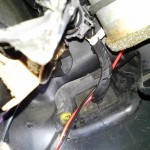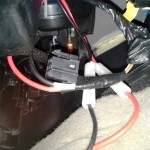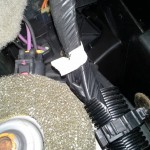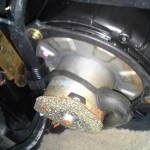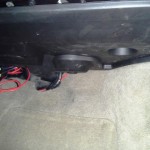Amateur Radio Forum?
 We are trying to gauge interest in adding discussion forums to the Amateur Radio Kentuckiana website and we want your input!
We are trying to gauge interest in adding discussion forums to the Amateur Radio Kentuckiana website and we want your input!
These discussion forum would provide a place for hams in the Kentuckiana area of Greater Louisville, Southern Indiana, throughout the region, and beyond to chat online, ask and answer questions, share news, learn about the amateur radio service both as a hobby and as a practical tool, as well as buying, selling, and trading radio equipment.
The forum would also provide a place to ask for help on equipment repair, where to find gear or parts, arrange for on-the-air meetups just to chat or to perform equipment checks, arrange ride-shares to hamfests, and more.
Please vote in the poll and leave any comments below about whether you would be interested in the addition of discussion forums.
Sam From Earth, Calling Space Station… Can You Hear Me?
South African telecom company MTM made a pretty neat commercial about a boy trying to talk to the space station on the radio.
Does this bring back memories about when you were learning to be a ham, why you got into it, and how you progressed?
ARTS Club Coach Service to Dayton Hamvention from Louisville
Per the ARTS Club Louisville Facebook page, the club will be offering motorcoach bus service to-and-from the Dayton Hamvention on Saturday May 16th 2015. Area hams interested in attending the Hamvention can avoid the traffic and hassle of driving (and parking!) for $30 per seat for the round trip.
It looks like they need to sell about 20 more tickets by 1 April 2015 in order to secure the chartered bus for the trip. For more details, visit their Facebook page (linked above) or check out the PDF flyer for the trip.
Kentucky IPAWS Test Today – 18 Mar 2015
 FEMA will be trying out their next-generation alerting capabilities today when they issue an internet-based test message through the Common Alerting Protocol (CAP) based IPAWS system. CAP Messages delivered through IPAWS are used to drive numerous alert systems, including supplementing over-the-air Emergency Alert System (EAS) messages, Wireless Emergency Alerts (WEA – formerly Commercial Mobile Alerting System or CMAS), overhead highway signs, and more.
FEMA will be trying out their next-generation alerting capabilities today when they issue an internet-based test message through the Common Alerting Protocol (CAP) based IPAWS system. CAP Messages delivered through IPAWS are used to drive numerous alert systems, including supplementing over-the-air Emergency Alert System (EAS) messages, Wireless Emergency Alerts (WEA – formerly Commercial Mobile Alerting System or CMAS), overhead highway signs, and more.
This test message will not go out over NOAA’s Weather Radio system but will be delivered electronically to CAP-enabled equipment, including many cell phones (depending on settings).
The Federal Emergency Management Agency (FEMA) will conduct a test of the Integrated Public Alert Warning System (IPAWS) this afternoon for Kentucky around 2:30 PM EDT, 1:30 PM CDT. This test WILL NOT involve NOAA Weather Radio, but you may get the message on your cell phone via the Wireless Emergency Alert System (EAS). The text of the message will be very similar to that used with the EAS Required Monthly Test messages.
Dayton Hamvention 2015
The Place to be for Radio Amateurs
The hamfest-on-steroids that is the Dayton Hamvention will be back at Hara Arena May 15-17, 2015. Last year the flea market and inside exhibits drew nearly 25,000 attendees to buy, sell, and trade their goods, take license exams, and meet up with old and new friends in the amateur radio community. As if that wasn’t enough, attendees have the opportunity to win some major prizes just for showing up.
A special event station will be operated from the inside exhibit area on (+/- QRM) 40M at 7.050 / 7.227, 20M at 14.050/ 14.270, and 10M at 28.050/ 28.470.
This year’s Hamvention hours are as follows:
Flea Market
Friday: 8:00 AM to 6:00 PM
Saturday: 8:00 AM to 5:00 PM
Sunday: 8:00 AM to 1:00 PM
Inside Exhibitors
Friday: 9;00 AM to 6:00 PM
Saturday: 9:00 AM to 5:00 PM
Sunday: 9:00 AM to 1:00 PM
Tickets can be purchased online here. For more information, visit the Hamvention website at hamvention.org.
Quick Temporary Mobile Install: Chevy Impala
 Anyone looking to do a mobile install should definitely check out the K∅BG Guide. In it, Alan K0BG details most aspects of a mobile ham installation job including electrical and mechanical safety, decoupling, RFI reduction and more.
Anyone looking to do a mobile install should definitely check out the K∅BG Guide. In it, Alan K0BG details most aspects of a mobile ham installation job including electrical and mechanical safety, decoupling, RFI reduction and more.
However – being short on time and money and having my fingers crossed for a near-term vehicle change – we didn’t want to get too involved with a mobile installation. Of course, when doing any kind of installation, all appropriate safety measures should be taken.
The car has an auxiliary jack and cigarette lighter in the unused ashtray shelf, both of which only ever get used for charging cell phones or running an FM transmitter. However, the car fire picture on K0BG’s site made it pretty clear that this might not be a great idea.
 My initial intention was to wire straight to the battery, as is customary, with the wires going through the firewall/passenger footwell via the boot through which the rest of the wiring goes. This sounded like a great idea until I peeled back the carpet, located the boot and discovered that the fasteners needed to be removed from the exterior… and that those fasteners were not only rusted on from years of road gunk and brine exposure, but were also tucked too tightly behind the steering rack to get a wrench on to. This is probably a situation where a wire insertion tool would have been great to get the wires through the firewall.
My initial intention was to wire straight to the battery, as is customary, with the wires going through the firewall/passenger footwell via the boot through which the rest of the wiring goes. This sounded like a great idea until I peeled back the carpet, located the boot and discovered that the fasteners needed to be removed from the exterior… and that those fasteners were not only rusted on from years of road gunk and brine exposure, but were also tucked too tightly behind the steering rack to get a wrench on to. This is probably a situation where a wire insertion tool would have been great to get the wires through the firewall.
 Many vehicles, especially those with production models used for public safety – like Ford Crown Vics, Chevrolet Impalas and Tahoes, Dodge Chargers, etc. – are designed from the outset with installing aftermarket electronics like radios, computer equipment and more. Undoing two clips and pulling the kick panel fastener (these are handy, if you like them, but I’ve never had a problem just pulling them out by with fingers and/or needle-nose pliers), gives us access to a convenient 20A fused power drop plug meant just for this purpose. The four-pin plug has a ground lead, a serial data lead, an always-hot 12V lead and a 12V lead that is switched with the key. To prevent a bonehead move like leaving the radio on and killing the battery, I chose the switched lead. I chopped the switched power and ground leads out of the connector and directly soldered the radio power cord to those wires.
Many vehicles, especially those with production models used for public safety – like Ford Crown Vics, Chevrolet Impalas and Tahoes, Dodge Chargers, etc. – are designed from the outset with installing aftermarket electronics like radios, computer equipment and more. Undoing two clips and pulling the kick panel fastener (these are handy, if you like them, but I’ve never had a problem just pulling them out by with fingers and/or needle-nose pliers), gives us access to a convenient 20A fused power drop plug meant just for this purpose. The four-pin plug has a ground lead, a serial data lead, an always-hot 12V lead and a 12V lead that is switched with the key. To prevent a bonehead move like leaving the radio on and killing the battery, I chose the switched lead. I chopped the switched power and ground leads out of the connector and directly soldered the radio power cord to those wires.
 As a side note, having the kick panel removed is also a great opportunity to fix the heater in the car. If your car heater only works on some speeds but not others, the culprit is very likely to be a faulty heater resistor, which is right next door to the power drop. In this car, speeds 0-2 (1-3 on the dial) went out first, leaving only speeds 3 and 4 (4 and 5 on the dial). More recently, the fourth speed went out, leaving us with only the blast furnace-like top setting, over which no conversation or radio could ever hope to be heard. With a fresh AC Delco 15-80571 heater resistor in hand, getting the heater system back to normal is relatively easy. Two birds, one stone, and no more putting off either task.
As a side note, having the kick panel removed is also a great opportunity to fix the heater in the car. If your car heater only works on some speeds but not others, the culprit is very likely to be a faulty heater resistor, which is right next door to the power drop. In this car, speeds 0-2 (1-3 on the dial) went out first, leaving only speeds 3 and 4 (4 and 5 on the dial). More recently, the fourth speed went out, leaving us with only the blast furnace-like top setting, over which no conversation or radio could ever hope to be heard. With a fresh AC Delco 15-80571 heater resistor in hand, getting the heater system back to normal is relatively easy. Two birds, one stone, and no more putting off either task.
With the heater resistor replaced and the power cable now attached to the factory power drop, we can stuff the excess cable into the kick panel and put the carpet back in place over top if it, making sure, of course, to leave enough hanging out to reach the radio. Again, since Impalas are marketed as police cruisers, there are a number of consoles and other mounting devices from folks like Gramber Johnson, Havis or Jotto that would work. We opted for a slimmer DIY contraption similar to what a hump mount would yield to mount the Kenwood TM-281.
Since we hope to change vehicles before too long (and because the radio isn’t always in the car), we also opted out of poking fresh holes in the roof for an NMO mount, instead going with a Tram 1185 mag-mount antenna. In this configuration, we can get out pretty well, talking to distant repeaters and with other motorists via simplex with no hot wires, no reports of alternator hum, and no other noticeable issues. If you remember the traffic on I71 coming back from the 2014 Dayton Hamvention, we talked simplex to a Swedish operator most of the way back, including while we caught up with and then zoomed past him on US42 while he was stuck on I71. I liked the 1185 enough to get my parents one for Christmas this year, in fact.
Since I chose the switched power drop connection, I can leave the radio on all the time so it comes alive when I start the car and goes off when I shut the car off. It transmits at the full 65W when the car is running, but the radio will restart if you try to transmit with the car off. The low power 25W mode works fine without the car running, but you may drain your battery quickly.
Amateur Radio Offerings Sparse at CES 2015
 As usual, amateur radio gear was conspicuously absent from the Consumer Electronics Show (CES) again this year. Icom and Yaesu had no presence and, although Kenwood showed up, their focus was mainly almost exclusively focused on automotive stereo systems. There were a couple of vendors/distributors exhibiting their line cards that included off-the-shelf antennas that you can probably find easier and cheaper on Amazon. I didn’t even see the aftermarket Baofeng battery makers I found last year.
As usual, amateur radio gear was conspicuously absent from the Consumer Electronics Show (CES) again this year. Icom and Yaesu had no presence and, although Kenwood showed up, their focus was mainly almost exclusively focused on automotive stereo systems. There were a couple of vendors/distributors exhibiting their line cards that included off-the-shelf antennas that you can probably find easier and cheaper on Amazon. I didn’t even see the aftermarket Baofeng battery makers I found last year.
Cobra was on hand with some VHF radios of the marine variety (like the 25-watt, NOAA enabled MR F45 – available now, and the new MR F57 and MR F77 – which will be available this month. They also showcased their rugged hand-held two-way radios like the CXT 545 and their latest in this category: the CXT 645, which claims a 35-mile range on top of the usual features of this type of radio. Another near-miss on ham radio gear was their 11-meter equipment – A/K/A CB radios. In this line, they were showing their new 29 LX BT radio, which allows operators to pair their smart phone to their CB radio, allowing users to make and receive phone calls through the radio without touching their phone. The 29 LX BT featurse one-touch Bluetooth operation, Caller ID with on-radio display and voice announcement of incoming callers, and text-to-speech that enables listening to incoming email messages and responding by voice transcription.
Midland was also present with their usual offerings of FRS/GMRS radios. They also had their line of NOAA weather radio receivers. Although everyone should have an NOAA receiver in their home (especially hams and even more especially so hams involved with SKYWARN), I have weather radios coming out of my ears, so I didn’t linger too long here.
 One interesting thing that did catch my attention was a new line of USB-based TV tuners aimed at smart phones and tablets from MyGica. As exciting as the prospect of live TV on my phone with the ATSC tuner is, my mind immediately went to a cleaner solution for mobile SDR listening with the DVB-T tuners.
One interesting thing that did catch my attention was a new line of USB-based TV tuners aimed at smart phones and tablets from MyGica. As exciting as the prospect of live TV on my phone with the ATSC tuner is, my mind immediately went to a cleaner solution for mobile SDR listening with the DVB-T tuners.
The non-native-English-speaking booth staff looked at me like I had just sprouted a second head when I asked what kind of chip it had in it or if it would be compatible with SDR software and, unfortunately, this product line hasn’t been brought to the market just yet to get one to try out. MyGica, however, does have a few other pretty nifty products that are already available like their Android-based streaming boxes that “turn any TV into a smart TV, including (in decreasing order of price), the ATV 582, ATV 1200 and ATV 520e as well as a USB TV tuner to get HDTV over-the-air on your desktop or laptop (hello, DIY DVR). Maybe this is the first step into convincing the I-don’t-need-a-radio-because-I-have-a-cell-phone people that their phone is a radio.
FCC Chairman Wheeler Speaks on Net Neutrality, Spectrum Auction
While the show was pretty much a bust on scoping out new ham gear, I did also get the chance to sit in on the One-on-One with FCC Chairman Tom Wheeler session. While they spent the bulk of the session discussing net neutrality – which pols are already making noise about, they did get around to discussing the upcoming spectrum auction. During this latter portion, Chairman Wheeler’s wireless roots showed through, calling broadcasters – like our low-power pals over at the Advanced Television Broadcasting Alliance – “disappointing” and indicated that their auction-delaying lawsuit was without merit. Wheeler indicated that the incentive auction will be happening and it will be happening in 2016. He went on to say that the future of the spectrum was in spectrum sharing.
Below is the CEA video of the talk:
GOP Plans to Fight Net Neutrality… Including Possible Defunding of the FCC
The Wall Street Journal ran a story today (Republicans Lay Plans to Fight FCC’s Net-Neutrality Rules), but they hid it behind their pay wall. If you’ve got a subscription, you can read the article above. If not, that’s OK… Android Authority also ran a story covering the GOP fight of Net Neutrality at Republicans will try to defund the FCC if net neutrality moves forward.
Net Neutrality advocates want the FCC to classify broadband providers as a utility which would allow the FCC to actually have authority over rules/regulations already in place. At the moment, the FCC’s power is minimal at best. But according to Republicans, net neutrality is a “step too far” and “regulatory overreach by the FCC” and that such rules could hurt future progress with cyber-security and wireless spectrum.
Android Authority went on to quote WSJ:
In the House, a Republican staffer for the House Energy and Commerce Committee, which oversees the FCC, said lawmakers won’t know what steps they will take until they see the agency’s final plan. But all options are on the table, he said, including legislation to block reclassification and cutting the agency’s budget.
CES is this week. Will we see new Amateur Radio gear?
The 2015 Consumer Electronics Show is this week, and what could be more consumer electronic-y than some fresh new ham radio gear?
As in past years, I will be attending a couple days of the show for work and will keep an eye out for new amateur radio gear. Unfortunately, previous attempts to be on the lookout for ham tech have been eminently disappointing. I have found some manufacturers of cheap Chinese HTs and aftermarket batteries, but the Big 3 have been either absent or focusing on other market segments.
Maybe this year will be better with fewer e-cigs and bedazzled cell phone cases and more ham stuff. If not, it’s only a short wait until the big Amateur Radio shindig at the NAB – where we’ll have the chance to win more goodies and rub elbows with the likes of Bob Heil and his tried-and-true “there, that sounds much better” shtick to open the event.
If you know of a CES exhibitor in the ham realm that we should check out, be sure to share it below in the comments.
KB6NU Creates an Audio Version of Amateur Radio Study Guide
Although no basic study guide could possibly instill every nuance of amateur radio to the reader, these types of guides are a great, quick way for aspiring operators to get their license. Ham radio licenses are often called a “ticket,” and rightly so. The technician class license is just that… a ticket into the world of amateur radio and, from there, operators can get their feet wet and learn more in an “hands on” environment.
Several members of my family have earned their licenses using Dan KB6NU’s No Nonsense Study Guides and these guides also played a role in my own license exam prep. But not everyone has the time (or the eyes) to stare at a PDF on a computer screen for hours on end or the desire to print out hundreds of pages from their printer.
KB6NU has come up with a solution to that – he is turning his No Nonsense Study Guides into an audio book format, starting with the technician guide.
The first chapter is finished and posted on his website. Have a listen below and visit the link above to provide Dan with feedback on subsequent chapters.
